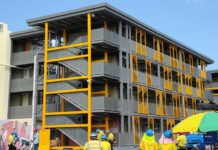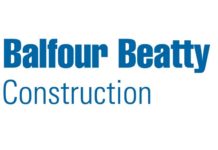Over the past decade, the construction industry has witnessed a remarkable transformation with the emergence and adoption of modular construction. Unlike traditional on-site building methods that are often hampered by weather conditions, labor shortages, and extended timelines, modular construction introduces a streamlined approach. This technique involves assembling building components also known as modules in a controlled factory environment before transporting and assembling them on the final site. As innovation and demand for efficiency collide, modular construction is quickly gaining ground and reshaping how we view the future of architecture and infrastructure.
The advantages are plentiful: reduced project durations, minimized waste, improved safety, and better cost control. In fact, some modular buildings can be completed in nearly half the time of traditional methods. Hospitals, schools, multi-family housing units, and even luxury hotels have turned to modular design to meet increasing demands without compromising on quality. Moreover, the technological integration in modular production such as the use of Building Information Modeling (BIM), automation, and advanced logistics continues to make this method more efficient and attractive. With these benefits becoming harder to ignore, many in the construction sector are beginning to reconsider the limitations of traditional on-site methods.
Quality Control and Sustainability at the Core
One of the most compelling arguments for modular construction lies in the superior quality control it offers. Factory-based construction ensures that each module is built to the same high standard, utilizing consistent processes and undergoing rigorous inspections. This uniformity is harder to achieve on a traditional construction site, where unpredictable weather and inconsistent labor skills can compromise the end result. Moreover, the indoor environment protects building materials from moisture, mold, and deterioration factors that often plague traditional builds.
Beyond quality, modular construction is significantly more sustainable. In a world where eco-consciousness is no longer optional, the industry has a responsibility to reduce waste, emissions, and energy consumption. Modular building drastically reduces on-site waste since materials are cut with precision using digital designs and leftovers can be repurposed within the factory. Transportation-related emissions are also minimized due to fewer deliveries and shorter on-site construction periods. Many modular projects are even designed with disassembly and reuse in mind, enabling a circular construction model that helps reduce landfill waste and conserves resources. All these elements collectively support the global push toward greener building practices.
Cost Efficiency and Faster Turnaround
Cost overruns and construction delays are common concerns in traditional building projects. Modular construction mitigates many of these challenges by offering predictability and speed. Since much of the work is done off-site, projects are less vulnerable to weather delays or labor disruptions. Additionally, because different parts of the project such as site preparation and module construction can happen simultaneously, overall project timelines are reduced significantly. This means quicker returns for developers, reduced financing costs, and a faster path to occupancy for owners and tenants alike.
Also, using a WIP report for construction helps teams keep a close eye on the financial side of things. It makes it easier to spot any cost overruns early and stay on top of the budget throughout the project.
Labor efficiency also plays a crucial role. While the traditional construction industry continues to struggle with skilled labor shortages, modular factories are able to employ and train workers in a stable, consistent environment. This not only ensures a steady workflow but also enhances job safety and reduces the risk of injuries, which are common on unpredictable job sites. Furthermore, bulk purchasing of materials and repeatable manufacturing processes contribute to a lower cost per unit. For developers and investors alike, these financial benefits make modular construction an increasingly attractive option for large-scale and even custom projects.
Addressing Maintenance and Long-Term Reliability
While modular construction boasts speed and efficiency, long-term maintenance and system reliability remain key considerations for homeowners and property managers. Because the modules are constructed with precision, the internal systems such as plumbing, electrical, and HVAC are generally installed with higher consistency and oversight than in traditional builds. However, maintenance challenges can still arise, especially when it comes to critical systems that sustain the safety and livability of the property.
Water systems, in particular, must be carefully monitored to avoid backflow contamination or failures that could lead to structural damage. Preventative care becomes essential here. Don’t let bad plumbing work affect your home. Take care of your property with quality Backflow Repair Services at San Diego Backflow Testing, where certified experts ensure your systems meet regulatory standards and continue functioning effectively. In a modular context, ensuring these services are integrated from the start can add to the overall value and longevity of the construction. Moreover, since modular buildings are often easier to inspect due to their segmented nature, identifying and repairing faulty systems becomes more efficient and less invasive.
Versatility and Innovation Across Building Types
Modular construction isn’t limited to one specific sector. From single-family homes to high-rise commercial complexes, its applications are impressively broad. In urban environments, where space is limited and the need for rapid development is urgent, modular techniques provide a solution that’s both scalable and adaptable. Developers can create pop-up hotels, temporary healthcare facilities, or even entire neighborhoods using prefabricated modules. These buildings aren’t just functional they can also be beautiful, boasting modern aesthetics, sleek interiors, and smart technology integrations.
Furthermore, architects and designers are no longer confined to the boxy stereotypes once associated with modular buildings. Today’s modular structures can include curved walls, eco-friendly green roofs, and luxurious finishes. Advances in computer-aided design and 3D printing are pushing the boundaries of what’s possible, turning modular construction into a playground for architectural creativity. As new materials and structural innovations emerge, we can expect modular buildings to become even more sophisticated merging style with substance in a way that traditional methods struggle to match.
A Paradigm Shift in Construction Culture
The shift toward modular construction reflects a broader change in how the building industry views innovation, efficiency, and sustainability. As housing shortages escalate and climate challenges intensify, the need for fast, reliable, and eco-friendly building methods becomes more critical than ever. While traditional construction will always have a place, particularly for custom or historically significant projects, the benefits of modular design are positioning it as the go-to solution for the future of development.
There are still challenges to overcome such as outdated building codes, zoning restrictions, and public misconceptions but progress is being made. Cities across the globe are beginning to embrace modular construction not just as a trend, but as a necessary evolution. From student housing in the U.S. to disaster relief shelters in developing countries, modular solutions are proving they can meet diverse demands with agility and resilience. As more stakeholders in construction, architecture, and urban planning continue to invest in and adopt modular methods, we’re likely witnessing a transformation that could redefine what it means to build a home, a community, or even a city.




























